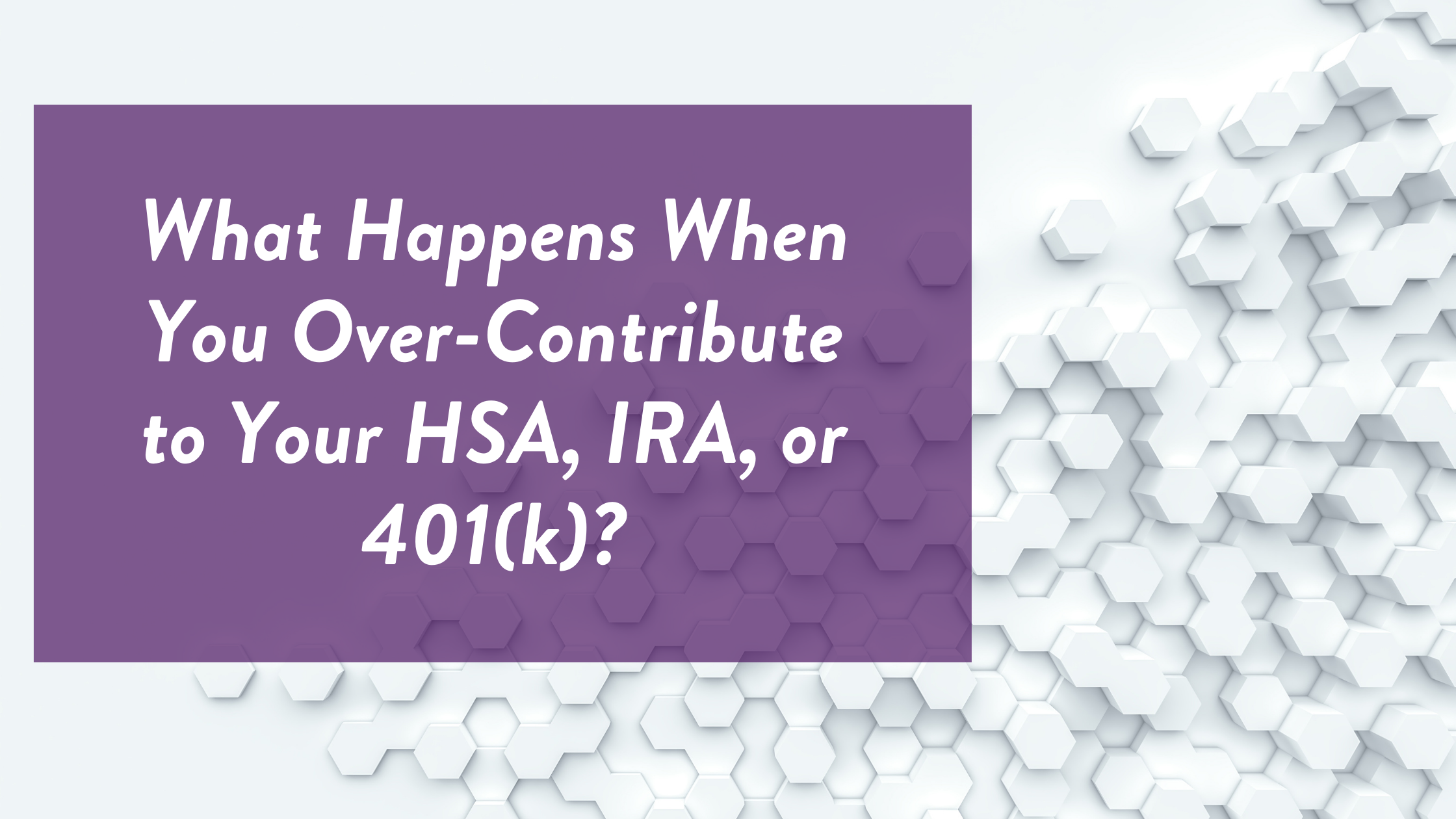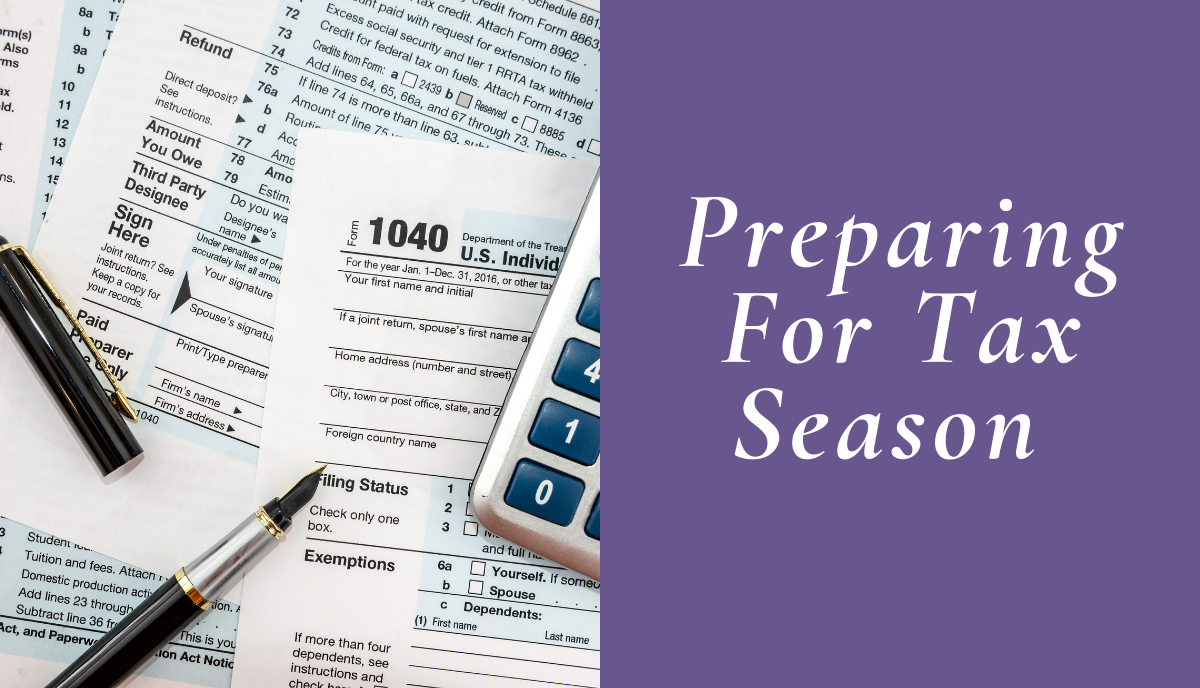
What Happens When You Over-Contribute to Your HSA, IRA, or 401(k)?
Setting aside money for retirement or healthcare expenses through an IRA, 401(k), or HSA is a smart thing to do. So contributing as much as possible to these accounts is a great idea, right? Well…yes and no.
What many people don’t realize is that you can contribute too much to these tax-advantaged accounts. The IRS has set limits on how much you can contribute to them each year.
If you don’t know the contribution limits for each of your accounts, it’s all too easy to over-contribute. And in some cases, a financial advisor may even give you the go ahead to contribute more than the set amount because they are unaware of the various tax laws surrounding over-contributions.
However, over-contributing can lead to fees, delayed taxes, and other headaches for you. This is why it’s important to understand the contribution limits for your tax-advantaged accounts.
Let’s take a look at how to know your contribution limit, what happens when you over-contribute to your HSA or retirement account, and how to fix an over-contribution.
How to Know Your Contribution Limit
First things first, it’s important to know your contribution limit when planning out your contributions for the year. Contribution limits can vary depending on the type of account you have, as well as your age, income, and filing status. Plus, the limits can change from year to year.
Here’s a brief overview of contribution limits for HSAs and retirement accounts for 2022.
HSA. For 2022, individuals can contribute up to $3,650 to their HSA. The amount for family HSA contributions increases to $7,300. In addition, taxpayers over 55 can contribute an additional $1,000 to their HSA. Note that employer contributions count toward this contribution limit.
401(k). For a 401(k) or 403(b), the contribution limit increased for 2022 by $1,000. This year, taxpayers with these types of retirement accounts can contribute up to $20,500 ($27,000 for those over 50). Note that employer contributions do not count toward your contribution limit.
IRA. Taxpayers under 50 can contribute up to $6,000 in a calendar year toward an IRA. Those over 50 can contribute an extra $1,000 ($7,000 total).
Note that if you have more than one IRA account, this limit applies to the combined total of contributions to all of your accounts. For example: Say that you have both a traditional IRA and a Roth IRA, and you contribute $4,000 to your traditional IRA. You can then only contribute up to $2,000 to your Roth IRA for a total of $6,000.
In addition, there are income limits for making contributions to a Roth IRA, and the amount of your traditional IRA contribution that is deductible decreases as your income increases as well. You can see a full list of 2022 income phase-out limits for IRAs here.
What Happens When you Over-Contribute to Your HSA or Other Tax-Advantaged Account?
If you exceed these contribution limits, you’ll have to figure out how to get the excess money out of the account when tax time rolls around. This can lead to fees, delayed taxes, and other issues that can cost you money and complicate your taxes.
The good news is that if you make a correction by withdrawing the excess contribution (plus any earnings) by your tax filing deadline, you can avoid most penalties. But even so, you still may owe income tax on the earnings portion as well as a 10% early withdrawal penalty if you’re under 59½ years old.
How to Fix and Over-Contribution
When you realize that you have over-contributed to your HSA or retirement account, it’s important to contact your plan administrator or account custodian right away for help dealing with the excess contribution. In most cases, you have three choices for dealing with the overage:
1. Withdraw the excess contribution before your tax filing deadline. When making your withdrawal, you must also withdraw any earnings on those funds. Note that even if you remove the excess funds before you file your taxes, you may still owe income tax on the earnings as well as an early withdrawal penalty.
When you make this correction, your plan administrator will send you a Form 1099-R showing what amount of the earnings portion is taxable. For an HSA, the custodian must file Form 1099-SA to show the distribution of excess contributions.
Withdrawing the excess before tax time is almost always the best choice for dealing with an over-contribution. However, there may be cases where you need another option.
2. Withdraw the excess amount six months after you file your taxes. If you don’t notice the over-contribution until after you file your taxes, you have six months to correct it with a withdrawal. Once you’ve corrected your error, you’ll then need to file an amended tax return by October 15.
3. Apply the excess contribution to the following year. You can ask your plan administrator to apply the excess to the following tax year, assuming it won’t put you over the limit for that year. However, an excess penalty of 6% will apply to the extra amount in your account at the end of the year.
Your CPA Can Help You Sort Out the Tax Implications of Over-Contributions
If you find yourself having to make adjustments due to an over-contribution, your CPA can help you sort through the implications to your taxes.
In addition to contacting your plan administrator, be sure to contact your accountant or tax advisor as soon as you realize your mistake. They can help you determine the best course of action for your taxes going forward, including filing an amended return if necessary.








